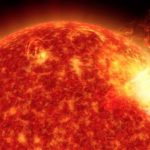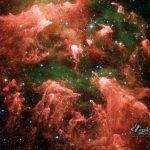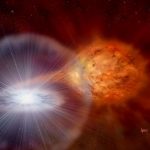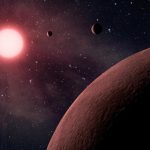Solar Storms May Have Been Key to Life on Earth0
- From Around the Web, Space
- May 24, 2016
How did life start on Earth? Scientists believe that the solar flares from the sun four billion years ago was enough to trigger a spark of life.

How did life start on Earth? Scientists believe that the solar flares from the sun four billion years ago was enough to trigger a spark of life.

Our red neighboring planet is not as red as we think as Hubble takes a picture that gives us a better view of Mars.

Astronomers have discovered the youngest galaxy ever born.

New findings based on a year’s worth of observations from NASA’s Van Allen Probes have revealed that the ring current – an electrical current carried by energetic ions that encircles our planet – behaves in a much different way than previously understood.

Distant neutron stars colliding into each other gives scientists clues to the creation of our world’s r-process elements.

Using recent advancements in Australian telescope technology, a Monash University-led research team has made an unexpected discovery that a large group of stars are dying prematurely, challenging our accepted view of stellar evolution.

Some supernovae have a reserve tank of radioactive fuel that cuts in and powers their explosions for three times longer than astronomers had previously thought.

Astronomers have discovered an Earth-like exoplanet that is the size of Neptune.

There are about 200 billion stars in our galaxy, with 40 billion of them like our sun.

Mitchell pointed out that UFO sightings were common near military bases, but not necessarily because they were actually just experimental aircraft or weapons tests: the alien presence was a warning.



